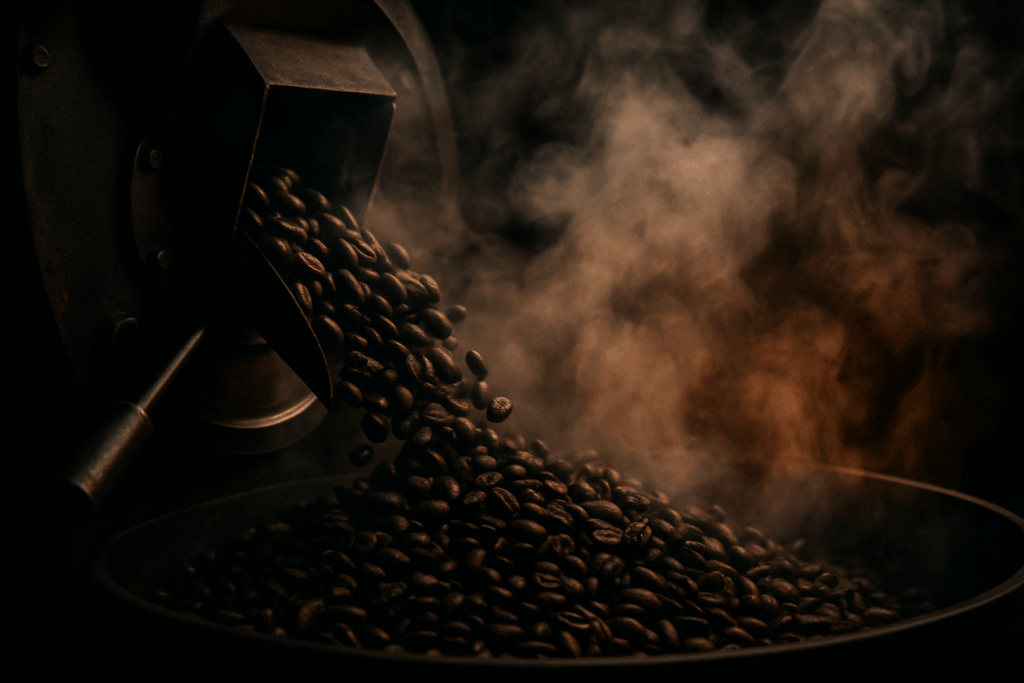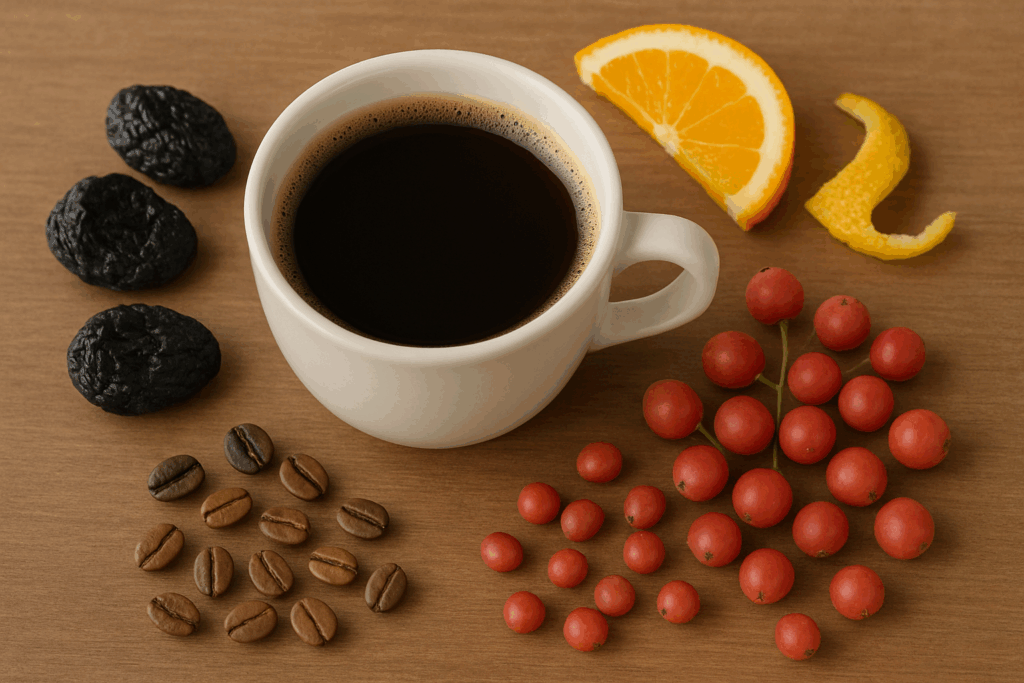Types of Coffee Beans: Arabica, Robusta, Liberica & Excelsa
Coffee doesn’t always taste the same — and there’s a good reason for that. Beyond roast level or origin, a lot of what you taste comes down to the types of coffee beans in your cup. In this guide, we’re breaking down the four main types — Arabica, Robusta, Liberica, and Excelsa — and what each one brings to the table.
Why Understanding the Types of Coffee Beans Matters
The bean you choose can change everything: flavor, aroma, body, and how much of a caffeine kick you get. Most people have heard of Arabica, but it’s just one of four. Each type has its own personality — from smooth and floral to bold or even wild. Let’s get to know them.
Most coffee is grown in the coffee belt, the tropical zone around the equator that includes parts of Latin America, Africa, and Southeast Asia. These regions have the perfect climate for all four types of beans to thrive. Want to go deeper into how location shapes flavor? Check out our full guide on the Coffee Belt.
Arabica: The World’s Favorite Bean
Arabica is smooth, layered, and often a little fruity or floral. It makes up about 60–70% of the world’s coffee, and there’s a reason it’s the go-to bean for many specialty coffee lovers.
It grows best in high-altitude, cooler regions, where slower growth gives it time to develop more complex flavors. Ethiopia — where Arabica originated — still grows wild varieties today. In fact, over 95% of the country’s coffee exports are Arabica, according to the International Coffee Organization.
Arabica has about half the caffeine of Robusta, which means less bitterness and more room for subtle flavor. It’s also easier on the stomach for some people. From pour-over to cold brew, Arabica lets the unique character of a region shine — whether that means floral and tea-like or nutty and chocolatey.
Some rare varieties of Arabica are prized for their intricate flavor and soft texture — perfect if you enjoy brewing thoughtfully and tasting closely. If you’re looking for a balanced, refined cup, Arabica’s a great place to start.

Robusta: The Bold and Bitter Underdog
Robusta isn’t subtle — and that’s exactly why some people love it. Twice the caffeine of Arabica, earthy flavors, and a strong personality make it a staple in espresso blends and instant coffee. That caffeine boost doesn’t just wake you up — it also helps the plant resist pests, making Robusta easier and cheaper to grow in hotter, lower-altitude regions like Vietnam or West Africa.
The flavor? Think bold, bitter, woody — but also, when done right, deep and surprisingly rich. Notes of dark chocolate, roasted nuts, and a warm, toasty finish are typical when done well. Some specialty roasters are giving Robusta a proper spotlight, showing that — when treated well — it can be rich, bold, and worth enjoying on its own.
Because it has more acids and fewer natural sugars than Arabica, Robusta brings a punchier, more intense flavor. That makes it perfect for espresso — where it helps build that signature crema — and for milk drinks, where its strength cuts through sweeteners and foam alike. So if you like your coffee strong, bold, and straightforward, Robusta might just be your match.

Liberica: The Bold Bean That Breaks the Rules
You don’t just stumble across Liberica — you seek it out. It’s big, bold, and often unpredictable. Grown in small pockets of Southeast Asia and West Africa, it makes up less than 2% of global coffee, but fans swear by its one-of-a-kind taste. Liberica beans look different — bigger, a bit asymmetrical — and the flavor? Floral, fruity, sometimes smoky, and often surprising. People describe it as tasting like dark berries, roasted wood, or even a little herbal.
It’s genetically different from both Arabica and Robusta, and some researchers believe it could help future-proof coffee farming as the climate warms. According to World Coffee Research, it may offer valuable diversity for sustainability. And while it used to be overlooked globally, that’s changing. More roasters are giving Liberica the spotlight it deserves. If you’re up for something outside the norm, this might be your new favorite.

Excelsa: The Tangy Bean That Stands Out
Excelsa might be the least known bean on this list — but it’s definitely not forgettable. Though it’s technically a variety of Liberica, it tastes completely different, with bright, tangy, fruit-forward flavors that add complexity to any cup.
You’ll mostly find Excelsa in blends, where it brings high acidity and a little spark to balance out darker, heavier notes. But when roasted on its own, it reveals a lively, juicy profile — like dried plum, red berries, or citrus peel.
Excelsa isn’t common. It’s grown in small amounts in Southeast Asia, and single-origin versions are rare. But for adventurous drinkers who want something different, it’s a fun discovery. Excelsa proves that great coffee doesn’t always follow the rules — and sometimes the best beans are the ones most people don’t even know exist.

Which Coffee Bean Type Is Best for You?
Each type of coffee bean brings something different to the table — and the best one for you depends on how you like to drink it. Here’s how they compare:
Love smooth, balanced coffee with fruity or chocolatey notes? Arabica is your friend — especially if you drink it black or brew it gently.
Prefer your coffee strong and bold, maybe with milk or sugar? Robusta has the punch and presence to stand out.
Looking for something off the beaten path with smoky, floral complexity? Liberica might surprise you.
Curious about unexpected fruitiness or love creative blends? Excelsa is worth hunting down.
Now that you know your beans, every cup you make becomes a little more intentional — and a lot more exciting. Because the bean you pick sets the tone — calm and cozy, bold and energizing, or something in between. So take that next sip with a little more curiosity — and a lot more joy.

